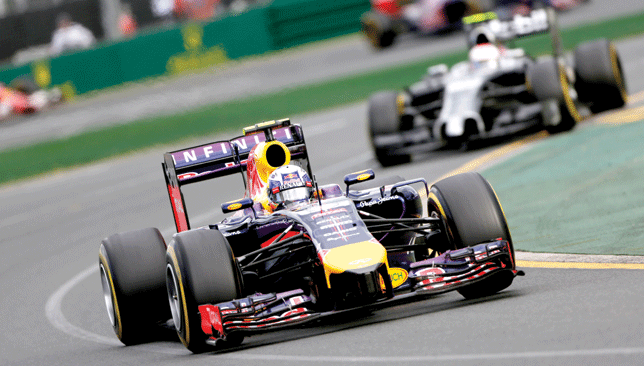
The Australian Grand Prix was the great unknown, a first chance to see how the gargantuan rule changes would take hold of Formula 1.
There was a certain element of predictability as Mercedes were true to their winter testing form and romped away with the victory courtesy of Nico Rosberg. But there was unpredictability too.
After a torrid winter of testing in which Red Bull had not once completed a full race distance, they sprung arguably the biggest surprise as Daniel Ricciardo crossed the line in second place.
Ok, he was stripped of the result and disqualified hours after the race for breaching fuel consumption rules – effectively each team’s fuel-flow rate is sensored by governing body the FIA and Ricciardo repeatedly breached the allowed limit of 100kg/h – but the pace and reliability were there.
That ruling aside, which Red Bull are appealing, what exactly did we learn from a technical perspective from the first 57 laps of the Formula 1 season? Well, the first point is that Mercedes are well ahead – Rosberg crossing the line 24.5 seconds ahead of the racing pack.
That throws up the very real fear that the championship could be a straightforward scrap between Rosberg and initial title favourite Lewis Hamilton, whose hopes of victory were undone from the very outset with a cylinder failure.
The early indicators are that the issue is not that serious but it meant Hamilton was well down on power and, as a result was slipping back behind the field before retiring.
It gave Mercedes’ rivals a glimmer of hope and, as Rosberg pointed out, “it is a fact that we are not 100 per cent sorted yet”.
You only had to look at the faces of the Mercedes pitwall in the final laps to see that they did not have complete confidence in the car, as quick as it is.
As Toto Wolff said when asked if the win was ever in doubt: “We knew the pace was good, we didn’t know if reliability would get us over the line.”
Wolff and his team will give a worried glance over their shoulder towards Red Bull. The team had barely managed a lap in the wet when the rain came down in Jerez in testing yet, Ricciardo masteredthe conditions superbly in the RB10 in qualifying.
Plus there were few long runs to speak of – never one over 20 laps – but the reliability and pace was impressive, of the No3 car at least. Hamilton had warned prior to the season start that Red Bull would be the car to beat once it had ironed out its technical gremlins.
Vettel’s issues – he had power-unit problems from the second formation lap – indicate there is still plenty to work on but their anticipated catch-up in the title race might not be as great as first feared.
If this is Red Bull in dire form, one wonders how quick they can be at their 2014 best. Mercedes will be hoping to bank as many points as possible before arguably their main championship challengers get to that point.
So what of McLaren? They lead the constructors’ championship following a second and third place for F1 debutant Kevin Magnussen and Jenson Button, and pace and reliability appear to be on their side.
Likewise, Ferrari seemed relatively on the pace with Fernando Alonso and Kimi Raikkonen in fourth and seventh. But it’s worth pointing out that the Australian Grand Prix is rarely indicative of how the season pans out.
A year ago, Kimi Raikkonen took the win for Lotus and the year before Button was victorious. How Lotus would like to turn back the clock to those heady days following a tortuous weekend in which Pastor Maldonado suffered a motor engine unit problem and Romain Grosjean had engine recovery system issues.
Of the top teams, their weekend was the most torrid. It was, though, in Melbourne not quite the war of attrition anticipated. Some had hinted that less than 10 drivers would finish the race.
In the end, Max Chilton was the 13th and final man to make the finish, albeit two laps behind. There were not quite the fuel conservation issues anticipated either although that may have been masked by a second formation lap and the safety car deployment.
One race in, we have a clearer idea of how 2014 might unfold. What happens next is anyone’s guess.